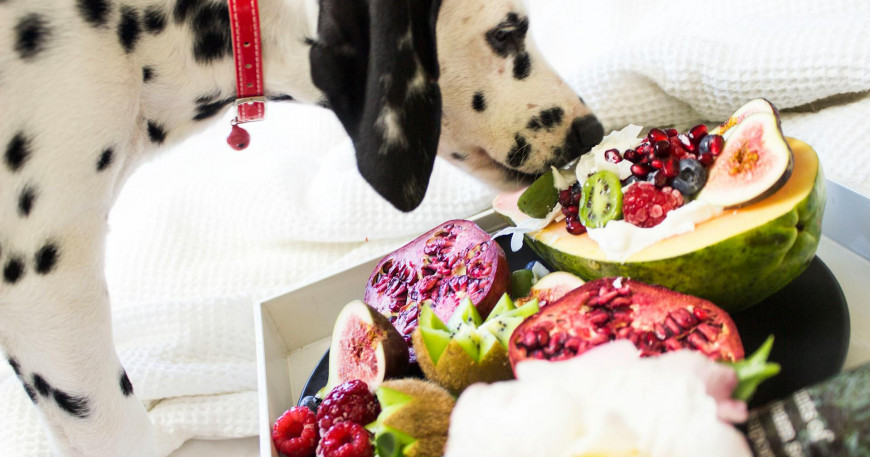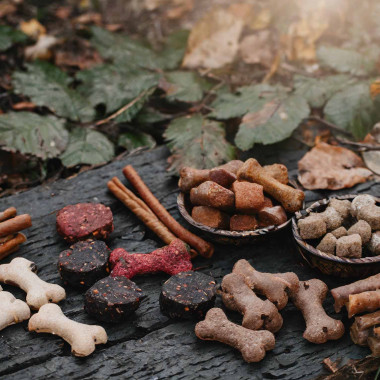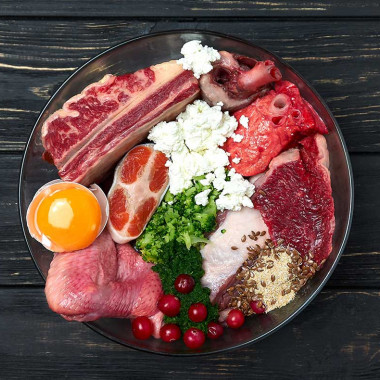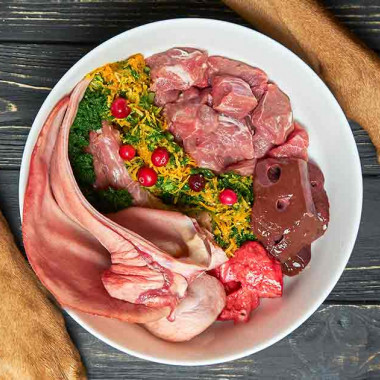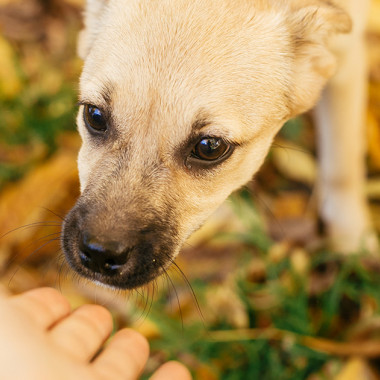As a caring dog owner, you are probably interested in what you can offer your pet to diversify their diet. Fruits can be a great source of vitamins, minerals, and antioxidants not only for humans but also for dogs. However, not all fruits are suitable for dogs. In this article, we provide a comprehensive overview of what fruits your dog can eat, which ones to avoid, and how to serve them properly.
Benefits of Feeding Fruit to Dogs
Why Include Fruit in Your Dog's Diet?
Vitamins and Minerals: Fruits are rich in essential nutrients that support the immune system, skin and coat health, and overall vitality of the dog.
Antioxidants: Help fight free radicals and slow down the aging process of cells.
Fiber: Supports healthy digestion and regular bowel movements.
Hydration: Many types of fruit contain a high percentage of water, which helps keep the dog hydrated.
Safe Fruits for Dogs
1. Apples
Benefits:
Rich in vitamins A and C, which support immunity and eye health.
Contain fiber that improves digestion and can help regulate weight.
Antioxidants in apples promote healthy skin and coat.
How to Serve:
Remove the seeds and core, which can be difficult for the dog to digest.
Cut into small pieces appropriate for your dog's size.
Serve in moderation as an occasional treat.
2. Bananas
Benefits:
Source of potassium, vitamins B6 and C, which support muscle function and the nervous system.
Contain biotin and fiber for healthy skin and digestion.
Can help with mild digestive issues.
How to Serve:
Remove the peel, which is difficult to digest.
Cut into slices or mash and add to food.
Serve in small amounts due to sugar content.
3. Blueberries
Benefits:
High antioxidant content supports the immune system and brain health.
Contain vitamins C and K, fiber, and manganese.
Low in calories, suitable as training treats.
How to Serve:
Washed, fresh or frozen blueberries can be served directly.
You can add them to food or use during training.
Monitor the amount to prevent digestive problems.
4. Strawberries
Benefits:
Rich in vitamin C and fiber, support immunity and digestion.
Contain enzymes that can naturally whiten teeth.
Antioxidants help fight inflammation.
How to Serve:
Wash and remove stems and leaves.
Cut into smaller pieces suitable for your dog.
Serve in moderation due to sugar content.
5. Raspberries
Benefits:
Contain antioxidants and have anti-inflammatory properties.
Low in sugar and calories.
Source of vitamins C, K, and manganese.
How to Serve:
Serve washed raspberries fresh.
Limit the amount, as they contain trace amounts of xylitol.
Suitable as an occasional treat.
6. Watermelon
Benefits:
High water content for hydration.
Source of vitamins A, B6, and C, supports immunity and skin health.
Contains potassium for muscle function.
How to Serve:
Remove the rind and seeds, which can be difficult to digest.
Cut into pieces appropriate for the dog's size.
Serve in moderation due to sugar content.
7. Pineapple
Benefits:
Contains vitamins C, B6, and the enzyme bromelain, which aids in protein digestion.
Helps with inflammation and supports the immune system.
Manganese in pineapple supports healthy bones.
How to Serve:
Remove the skin and tough core, which are difficult to digest.
Cut into small pieces and serve fresh.
Serve in small amounts due to sugar content.
8. Mango
Benefits:
Rich in vitamins A, B6, C, and E, support eye health and immunity.
Contains fiber for healthy digestion.
Antioxidants support overall health.
How to Serve:
Remove the peel and pit, which can be dangerous.
Cut into small pieces suitable for your dog's size.
Serve in moderation due to sugar content.
9. Kiwi
Benefits:
High content of vitamins C and K, supports immunity and blood clotting.
Contains potassium and fiber for healthy digestion.
Antioxidants support cell health.
How to Serve:
Remove the peel, which can be difficult to digest.
Cut into small pieces.
Serve in small amounts and monitor your dog's reaction.
10. Pears
Benefits:
Source of vitamins C and K, supports immunity and bone health.
Fiber improves digestion and can help regulate weight.
Contain antioxidants that support overall health.
How to Serve:
Remove the core and seeds, which can be difficult to digest.
Cut into pieces appropriate for the dog's size.
Serve in moderation as an occasional treat.
Fruits Dogs Should Avoid
1. Grapes and Raisins
Why to Avoid:
Can cause kidney failure.
The exact mechanism of toxicity is unknown, but even small amounts can be dangerous.
Recommendation:
Never give grapes or raisins to your dog.
Ensure they are out of your dog's reach.
2. Avocado
Why to Avoid:
Contains persin, which can be harmful in larger amounts.
The peel and pit pose a choking hazard and digestive issues.
Recommendation:
Avoid giving avocado to your dog.
If your dog eats a small amount of the flesh, monitor them for any discomfort.
3. Citrus Fruits (Lemons, Limes)
Why to Avoid:
High acid content can cause stomach irritation.
Essential oils in the peel and leaves can be harmful.
Recommendation:
Do not give citrus fruits or products to your dog.
A small amount of the pulp is unlikely to harm, but it's better to avoid.
4. Cherries
Why to Avoid:
Pits contain cyanide, which is toxic.
Can cause blockage in the digestive tract.
Recommendation:
Do not give cherries to your dog.
If you choose to give the flesh, carefully remove the pit and serve only a small amount.
5. Plums
Why to Avoid:
Pits contain cyanide and can cause poisoning.
Risk of digestive tract blockage.
Recommendation:
Avoid giving plums to your dog.
If you give the flesh, remove the pit and serve in small amounts.
6. Peaches and Apricots
Why to Avoid:
Pits contain cyanide and can be dangerous.
Risk of blockage and digestive issues.
Recommendation:
Do not give peaches and apricots to your dog.
If you give the flesh, carefully remove the pit and serve with moderation.
How to Properly Serve Fruit to Your Dog
Portion Size
Moderate Amounts: Fruit should make up a maximum of 10% of the daily diet.
Adjust to Dog's Size: Smaller dogs need smaller portions.
Preparing the Fruit
Wash Thoroughly: Removes pesticides and dirt.
Remove Seeds, Cores, and Pits: Can be harmful or difficult to digest.
Remove Tough Peels: Makes digestion easier.
Important Warnings
Gradual Introduction: Start with a small amount and monitor your dog's reaction.
Watch for Allergic Reactions: Symptoms like itching, swelling, or digestive discomfort.
Avoid Added Sugars and Sweeteners: Can be harmful; xylitol is especially toxic to dogs.
Fruit in the BARF Diet
Role of Fruit in the BARF Diet
BARF (Biologically Appropriate Raw Food) is a feeding method that mimics the dog's natural diet. Fruit in the BARF diet serves as:
Source of Vitamins and Antioxidants: Supports immunity and health.
Supplement to Meat: Adds variety and increases the nutritional value of the diet.
Supports Digestion: Fiber aids healthy digestive function.
Recommended Amounts
Moderate Amounts: Fruit should make up about 5–10% of the total diet.
Combination with Vegetables: Together, they form the plant component of the diet.
Combinations of Fruit with Meat from Our Offer
To diversify the menu, you can combine fruit with quality meat:
Chicken Meat with Blueberries: Supports immunity and heart health.
Beef with Apples: Improves digestion and provides energy.
Lamb with Bananas: Proteins and potassium for muscles.
Turkey Meat with Raspberries: Antioxidants for brain health.
Fish Meat with Mango: Omega-3 fatty acids and vitamins for a healthy coat.
All our meat products are fresh and ideal for the BARF diet. By combining with suitable fruits, you ensure a balanced and tasty diet for your dog.
Conclusion
Fruit can be a healthy and tasty addition to your dog's diet when served correctly and in appropriate amounts. It's important to know which types of fruit are suitable for dogs and how to prepare them properly. Always monitor your dog's reactions to new foods and consult your veterinarian if you have any questions or concerns.
Frequently Asked Questions (FAQ)
Can a dog eat dried fruit?
Dried fruit has a higher concentration of sugar and may contain preservatives. It is recommended to serve fresh fruit and avoid dried fruit to prevent digestive problems.
Is it safe to give my dog fruit juices?
No, fruit juices often contain high sugar content and lack fiber. It's better to serve whole pieces of fruit.
How often can I give my dog fruit?
Fruit should be an occasional supplement to the diet. Serve it in small amounts 1–2 times a week.
Can a dog eat exotic fruits like papaya or pomegranate?
Papaya is safe in small amounts. Pomegranate can cause digestive issues. Always consult your veterinarian before introducing exotic fruits.
What should I do if my dog ate unsuitable fruit?
Contact your veterinarian and provide details about what fruit and how much your dog ate. Monitor your dog for any signs of discomfort.
Internal Links
BARF Diet for Dogs – A Complete Guide
Safe Vegetables for Dogs
How to Properly Feed Your Dog a Raw Diet
Our Offer of Quality Meat for Dogs
BARFER is your reliable partner in natural dog feeding. We offer quality ingredients and expert advice for a healthy and happy life of your pet.
Order quality ingredients for the BARF diet at www.barfer.ie
